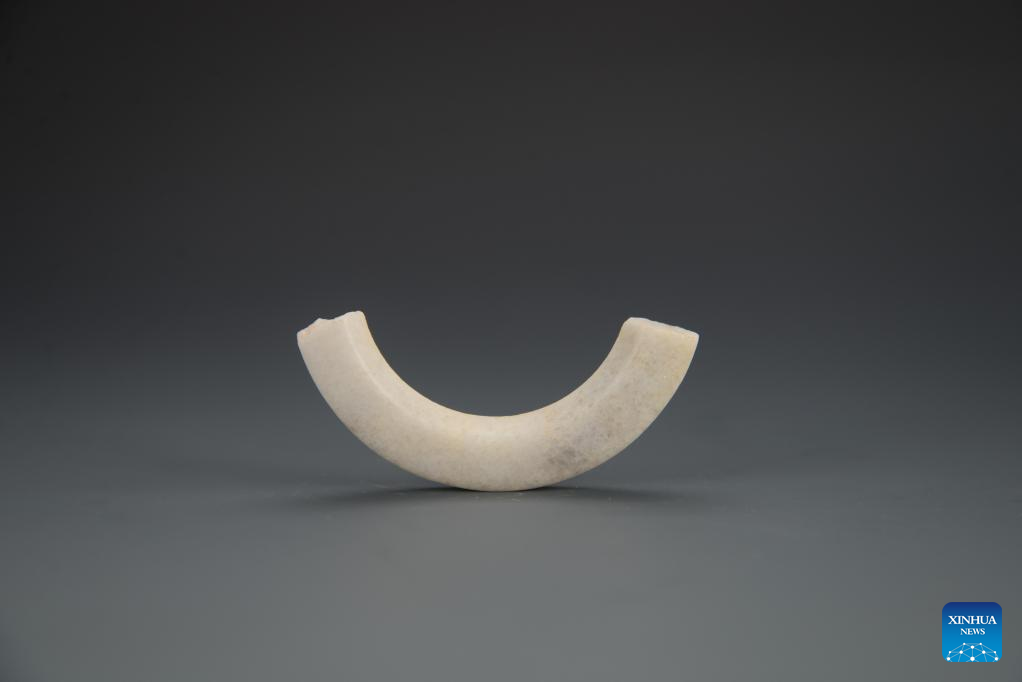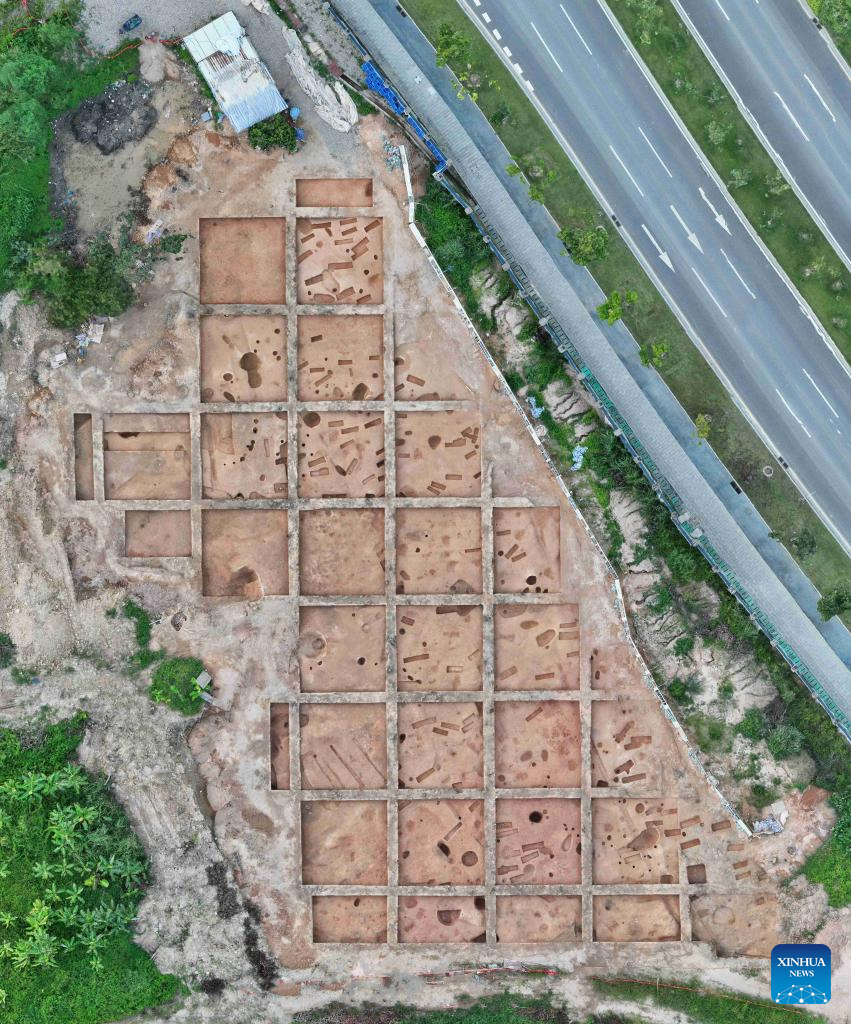
This photo taken on Aug. 15, 2024 shows a jade item unearthed at the Gancaoling site. An archaeological excavation in the southern Chinese metropolis of Guangzhou has further revealed a Late Neolithic Age site rich in artifacts, dating from about 4,600 to 4,300 years ago, said the municipal cultural relics and archaeology institute on Friday.(Guangzhou municipal cultural relics and archaeology institute/Handout via Xinhua)
GUANGZHOU, Aug. 16 (Xinhua) -- An archaeological excavation in the southern Chinese metropolis of Guangzhou has further revealed a Late Neolithic Age site rich in artifacts, dating from about 4,600 to 4,300 years ago, said the municipal cultural relics and archaeology institute on Friday.
Located in Huangpu District, the Gancaoling site is a cluster of Late Neolithic Age ruins. During the latest excavation work, 143 tombs, 140 ash pits or cellars, 125 column holes as well as 341 pieces or sets of relics including pottery and jade decorations have been unearthed at the site.
Such findings have made Gancaoling a Late Neolithic Age site with the hitherto largest number of tombs uncovered in the Guangdong region, with complex relics, rich contents and a multitude of unearthed artifacts, said Zhang Qianglu, head of the institute.
Starting from 2017, the institute has been carrying out excavation and research work on the site.
"This provides important physical materials for constructing the archaeological cultural lineage from the Late Neolithic period to the early Western Han Dynasty (202 BC-25 AD) in Guangzhou and even the Pearl River Delta region," Zhang added. ■

This aerial drone photo taken on July 23, 2024 shows a view of the Gancaoling site in Huangpu District, Guangzhou, south China's Guangdong Province. An archaeological excavation in the southern Chinese metropolis of Guangzhou has further revealed a Late Neolithic Age site rich in artifacts, dating from about 4,600 to 4,300 years ago, said the municipal cultural relics and archaeology institute on Friday.(Guangzhou municipal cultural relics and archaeology institute/Handout via Xinhua)



